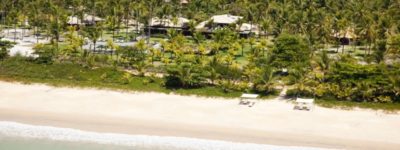The Reserva do Ibitipoca started in 1981 with the purchase of the Fazenda do Engenho (Engenho’s Farm). Previously some of the farmland had been abandoned and was starting to regenerate.
Today the Reserva is composed of over 100 properties, which exceeds 3,000 hectares of preserved area in the counties of Lima Duarte, Bias Fortes, and Santa Rita do Ibitipoca. The Reserva partially encompasses the State Park, to form a buffer zone to increase the natural habitat to encourage the proliferation of the local wildlife.
In 2009, the Reserva do Ibitipoca was opened for tourists with the goal of creating employment opportunities to improve the quality of life for the local population.
The Park
The Ibitipoca State Park is located at the junction of the Mantiquira Mountains, in the southeast of Minas Gerais.
It was a vacant area used as pasture by neighboring farmers. Its grottos were once used as a refuge for fugitive slaves.
Originally called Ibitipoca’s Farm or Big Mountain, the land was the target of a dispute between the State and the Church. In 1932, a chapel of the Senhor Bom Jesus da Serra (Good Jesus Lord of the Mountain) was built at the Peak of the Peon in an attempt to demonstrate its authority.
When the State won the dispute against the church, the construction was abandoned and subsequently destroyed by a lightning strike in 1940. The ruins are still there.
The Image of the Good Jesus was taken to a nearby village called Mogol. A madman stole the church bell and threw it off a cliff. The bell landed and to this day remains on the Reserva do Ibitipoca at the Farm Patuá.
The current state Secretary of the Environment, Dr. José Carlos de Carvalho, a major enthusiast of the region, was responsible for the official creation of the Ibitipoca State Park on July 4, 1973.
With 1488 hectares, it is one of the smallest conservation areas in the state, but also the third most visited protected area in the country because of its natural beauty.
Sustainability
The Reserva do Ibitipoca projects go beyond just environmental protection that is already expected from a conservation area. The Reserva takes a holistic approach to the region is concerned with protecting the community, its local culture and economy as well as becoming a major center for environmental research. The Reserva’s master plan follows sustainable guidelines to guarantee that the implementation of various projects can satisfy the needs of today without compromising the ability of future generations to meet their own needs. This is a complex, demanding process.
The environmental aspect requires maintenance, protection, recovery, and prevention. There are endangered species that need help. Their habitat needs to recreated through reforestation and reintroduction and the species needs to be continuously monitored.
The focus on the community spurs projects to encourage the inclusion of natives and residents with the park that will enrich the local culture and bring back traditions that were lost or weakened over time. One very important goal for the Reserva is to stimulate the local economy with income generation by promoting and supporting events and various initiatives to develop the regional economy.
To meet its research goals, the Reserva can serve as an outdoor lab and is seeking professionals and academics in the area that want to study the region’s aspects.
Currently, there are a number of studies underway, such as monitoring the Muriquis at the Luna Forest.




